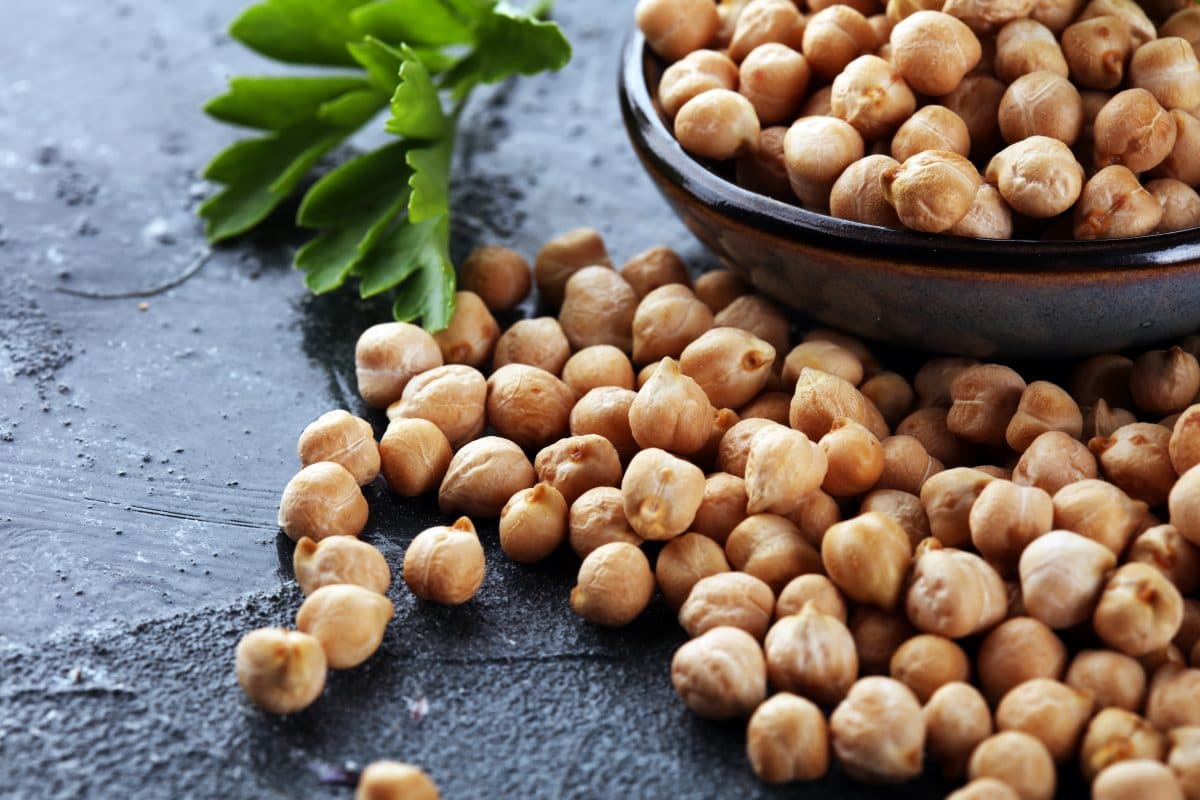Chickpeas & FODMAPs – are chickpeas safe to have on the low FODMAP diet?
- Low FODMAP diet
Chickpeas and the low FODMAP diet an area of confusion? Look no further.
You may presume that chickpeas are a no-go on the low FODMAP diet. In this article, I am going to surprise you and explain how you can have chickpeas during the restriction phase.

What are chickpeas?
Chickpeas are a type of legume which are typically grown in Asia, North America, Australia and some regions of Europe.
Fun fact: India is responsible for nearly two thirds of the global production! (1)
Chickpeas are an important food to include in your diet as they are high in protein and fibre . They are also high in protein and you may rely on them as a vegan.
Are chickpeas FODMAP friendly?
Chickpeas can be eaten on the low FODMAP diet but only in certain forms.
When chickpeas are initially harvested from the ground in their raw form, they are not FODMAP friendly. Interestingly, they do have a lower FODMAP content than many other legumes. But sadly that content is still too high for you on the diet.
Oligosaccharides (a type of high FODMAP) is the most common form of carbohydrate found in chickpeas. You will be surprised to know that processing methods will impact the level of this FODMAP in them.
You can read more about how FODMAPs cause symptoms in our post here.
Why are canned chickpeas FODMAP friendly?
Canned chickpeas are still an option during the restriction phase of the low FODMAP diet due to how they are processed.
In fact, you can enjoy a serving size of ¼ can of chickpeas, this equates to 42g as suggested by Monash (2).
The chickpeas you eat from a can are being stored in water whilst in the can, so FODMAPs are leached out. So, if you do decide to use canned chickpeas then make sure you wash them thoroughly to ensure the high FODMAP water has gone.
Added bonus – your canned chickpeas are ready to eat as they were soaked in the water, this reduces your cooking time (even better!).
Chickpeas when consumed as per the recommended serving size from Monash is an amber rated FODMAP. This means that in moderate amounts, chickpeas can be tolerated on the low FODMAP diet but you should be careful not to eat multiple ‘amber’ foods together.
You can end up FODMAP stacking otherwise.
Try adding chickpeas to your bolognese, currys, salads, soups or stews to increase the fibre and protein content (3).
Chickpeas and gut health
Gut health is becoming more and more prominent for not only gastrointestinal health but your general health also. As chickpeas are high in fibre, every serving acts as a natural prebiotic for your gut microbiome.
You can learn more about the importance of prebiotics here.
Eating chickpeas has been linked by research to increase fibre intake and healthier eating patterns (4).
4 low FODMAP chickpea recipes
Here are my 4 favourite recipes;
- Vegan Low FODMAP Chickpea Salad
- Low FODMAP Roasted Chickpeas
- Low FODMAP Mediterranean chickpea stew
- Low FODMAP Hummus With Smoked Paprika | THE IBS DIETITIAN
What about chickpea flour?
With regular wheat flour not being an option on the low FODMAP diet you may be wondering about using chickpea flour as a sub. Sadly, this has not yet been tested by Monash and so we can not give you an answer.
It is unlikely that you will be able to use chickpea flour though as its processing doesn’t not use any fluid. So there is no chance for the FODMAPs to leach out.
Summary
The FODMAP content of chickpeas varies depending on how they have been processed. But you can and should include them in your low FODMAP diet to gain all the nutritional benefits.
Article written by Camilla Donaldson BSc Hons Nutrition reviewed by Kirsten Jackson